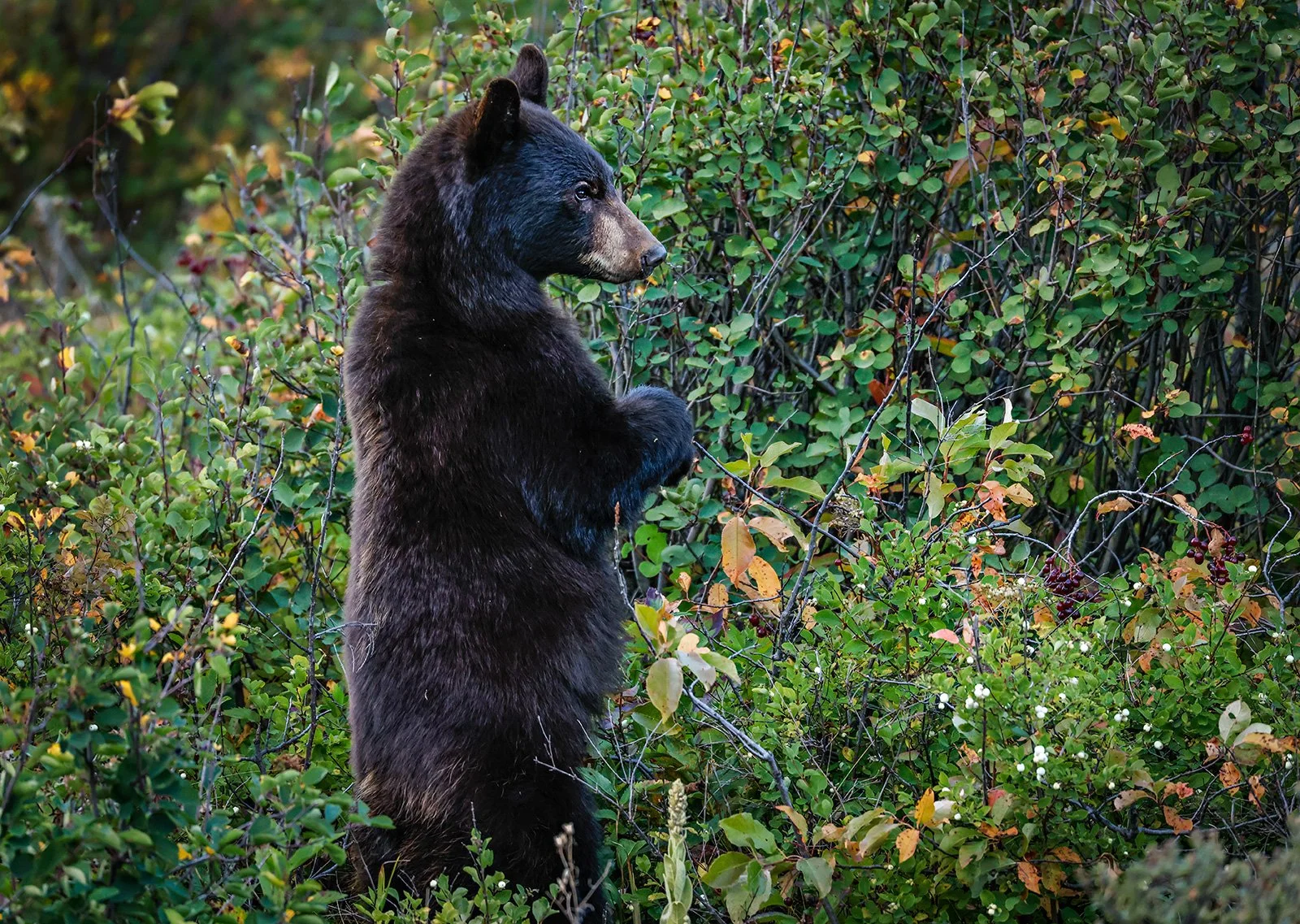Hiking Humans Impact Large Mammal Habits
New study shows how animals changed their behavior around hiking trails on the east side of Glacier National Park during and after the COVID-19 closures
BY MICAH DREW
JANUARY 26, 2023
The Flathead Beacon
The height of the COVID-19 pandemic saw a vast number of people take to Montana’s public lands to recreate, igniting concerns over the potential increase in human impacts on the landscape. A new study examining hiking trail use in Glacier National Park (GNP) during and after the COVID-19 closure of the park’s east side sheds more light on how species react to the presence of humans.
Researchers with the National Park Service and Washington State University monitored mammal species via camera traps placed near trails throughout the eastern side of Glacier Park during the summer of 2020, when visitors were prohibited from accessing the area, and 2021, when visitation returned. The study, published in the journal Scientific Reports, showed that 16 of the 22 species observed altered their behaviors to avoid humans.
Researchers wrote that there was a “consistent negative response across all groups of mammals, with fewer detections, reduced occupancy and detection probabilities, and generally decreased daytime activity,” in the year that visitors were allowed to access the study area.
“The surprising thing for me was that we were able to pick up such a strong signal in such a short duration study,” said Glacier National Park wildlife biologist John Waller, a co-author on the study. “It shows that the impact of human activity is real and must be pretty profound.”
Waller said that while the COVID-19 shutdowns caught everyone off guard, it really “threw a monkey wrench” in research projects around the world, before scientists realized the serendipitous opportunity to look at large scale shifts of human activity.
Researchers in GNP were in the midst of a long-term camera study in the park, and were able to adapt a study design to specifically monitor the areas closed to human activity in 2020, when the east side entrances at St. Mary, Two Medicine and Many Glacier were shuttered.
Forty camera traps, heavily concentrated in the Two Medicine and Many Glacier valleys, were utilized during the summer of 2020 and again in 2021. The cameras triggered when animals or humans walked past on the trails, and researchers were able to look at the data to determine how animal spatiotemporal use (where and when they were observed) changed between the two years.
Among 14 focal species captured on the cameras, including black bears, grizzly bears, bighorn sheep, and whitetail and mule deer, all but two species utilized fewer sites near trails during the summer the park was open to recreation. Six of the species saw a greater than 10% reduction in spatial observations, and only mule deer and red foxes were observed at a greater number of locations.
In addition, cameras captured nearly every species at a lower rate across the entire research area when it was open to recreation. Elk detections decreased from 130 to 62, black bears from 199 to 112 and coyotes from 294 to 78. One outlier was the red fox, which was seen 33 times during the closed year, but 266 times during the open year.
Several species, most noticeably the grizzly bear, increased their daytime activity when humans were not present.
“What this study really captured is that there’s a lot going on,” Waller said. “It’s a complete ecosystem — these species are interacting and reacting to humans, and how they react to humans will affect how they interact with each other.”
The data did not give any indications about the overall fitness of each individual species — there’s no way to know if animals were just avoiding high-use trails or if the actual population was impacted.
“This is just spatiotemporal data. There’s no data of effects on survival or reproduction,” Waller said, adding that would be the next step in the research process. “When you look at how animals, and people included, respond to things in their environment, a negative response doesn’t mean they roll over and die. It’s just evidence of a different behavior.
The study notes that the areas of GNP where the data was collected do not receive the highest levels of recreation, indicating that even more pronounced effects of humans on the ecosystem may be seen in more heavily trafficked areas of the park.
“We know that there’s only so many people you can cram into a place before there’s a bad effect, so this is one more piece of evidence we can point to when we work on management policies in the future,” Waller said. “The take home message for us is that our presence on the landscape has profound effects on these species and we need to take that seriously.”
The new study utilized data collected by National Park Service staff and volunteers, and was made possible with funding by the Glacier National Park Conservancy. In addition to Waller, co-authors include Alissa Anderson and Daniel Thornton of the Mammal Spatial Ecology and Conservation Lab at Washington State University. For more information about scientific research in GNP, visit www.nps.gov/glac/learn/scienceresearch.
